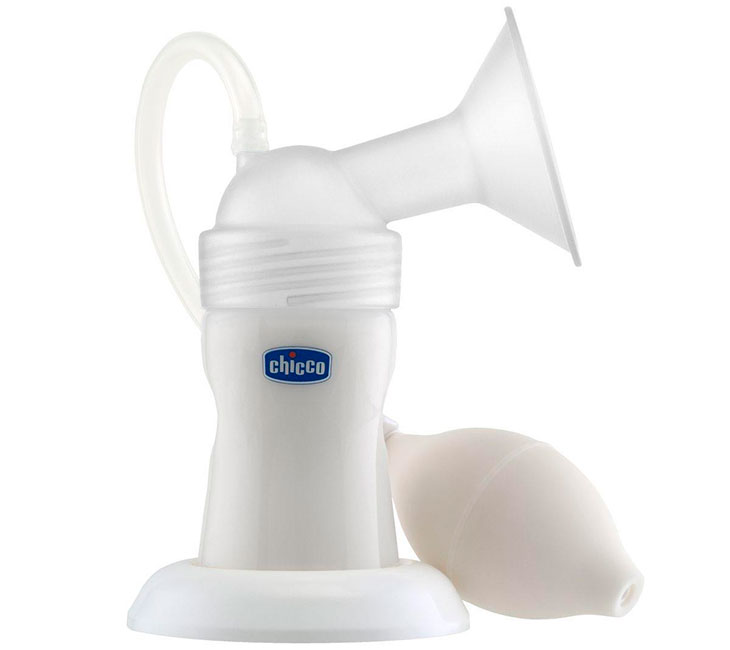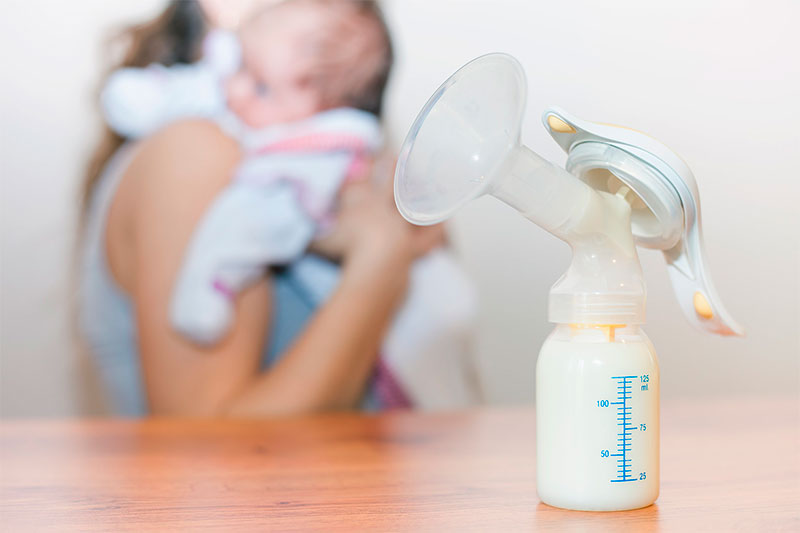For different reasons, each mother once faced the necessity of expressing breastfeeding. In this case, the breast pump can be a very useful assistant, because in a short period of time a woman will be able to collect the required portion of breast milk absolutely painlessly for herself. You will learn about the types of this device and what parameters you should pay attention to when choosing a product in this article.

Content:
Best breast pump manufacturers - which company to choose
Choosing a breast pump, it is better to give preference to well-known manufacturers who have been producing products for breastfeeding for several years and have won the trust of consumers around the world.
The most popular breast pump brands today are:
1. Medela
2. Canpol babies
3. Tommee tippee
4. Avent
These companies produce a wide range of products for young mothers and children. Brands are constantly improving their products, because conduct multiple research, take into account the wishes of consumers and introduce innovative solutions. Breast pumps comply with international quality standards, so it is absolutely safe to use.
With the help of our ranking of the best breast pumpsYou can find out which models of these devices are considered the most efficient and reliable.
Principle of operation and design of the breast pump

Breast pump - a device for decanting breast milk. The device helps control lactation and prevent lactostasis (milk stagnation in the breast). The principle of operation is extremely simple. With the help of a special vacuum nozzle and an air lock in the device, pressure is created, and the milk comes out of the breast. There are various models, so the principle of operation is implemented in different ways.
There are many situations in which young mothers simply can not do without pumping:
1. Preservation of lactation in case the baby and mother are not together. This situation can occur if a woman is hospitalized, takes potent drugs incompatible with breastfeeding (HB), etc.
2. The baby cannot suckle on its own. In this case, the mother has to feed the baby from the bottle, so you can not do without pumping.
3. Cracks in the nipples. This is quite a painful condition in which HB brings a young mother a lot of discomfort. At the time of treatment of cracks, HB has to be canceled.
4. Prevention of mastitis. Excess milk in the breast leads to lactostasis, which in turn is the most common cause of mastitis, so young mothers resort to pumping to normalize lactation and release the breast for a new portion of milk.
In addition, a breast pump helps to increase lactation, if milk is not enough, because development of the latter increases, if you often decimate and put the baby to the chest.
Types of breast pumps
Mechanical Pump Pumps

These are the cheapest breast pumps. They are a plastic funnel for the chest with a pear. In some models, there is an additional mounting for the baby bottle.
In order to decant milk using such a device will require some effort. You must click on the pear and attach the funnel to the chest, then gradually release the pear. Due to the vacuum pressure, decanting occurs. With regard to sterilization, then under the influence of high temperatures, a rubber bulb can deform over time.In addition, the frequent use of such a device can lead to nipple cracks, so the device is more suitable for short-term use.
Advantages:
- convenient design, minimum details;
- breast pump easy to operate;
- silent operation;
- compact size;
- low cost.
Disadvantages:
- due to the lack of imitation of breast sucking, nipple cracks may appear;
- allows you to collect a small amount of breast milk;
- applying physical effort reduces the efficiency of decanting.
Mechanical Piston Breastpumps

The device consists of a silicone tip on the nipple, a special lever and a bottle. To express the milk, you must firmly press the nozzle to the chest and press the lever. Milk enters the bottle and the woman does not have to additionally pour it. Some models have nozzles with protuberances that provide more comfortable pumping.
Such a device allows for 10 minutes to decate up to 200 ml of milk, which is a significant advantage over manual collection, which takes about 30 minutes to obtain such a volume. The device is perfect for regular use, because Frequent pumping does not hurt the chest.
Advantages:
- the device simulates baby sucking;
- has a mild massage effect that stimulates lactation;
- practical, easy to disassemble;
- easy to use;
- high productivity.
Disadvantages:
- hands may get tired when pumping;
- devices are not always strong, you may need to change the nozzle.
Electric

Such models are a dream for every mother. The principle of operation of the device - the creation of a vacuum around the nipple with a special motor. Milk pumps allow you to decant a fairly large amount of milk in a short period of time, without putting any special effort into it - a woman just has to press one button and the device starts its work. At the time of collection, a woman can go about her business: read, watch TV, etc. At the same time, mother can adjust the intensity of the process.
Some models express two breasts at the same time, complete with capacity for storing and transporting milk. Devices can work from a network or from batteries. Such breast pumps are recommended for women who need regular pumping.
Advantages:
- saving time and effort;
- high productivity;
- several modes of operation;
- the device is great for frequent use;
- does not injure the chest.
Disadvantages:
- high price;
- impossible to sterilize completely;
- dimensions, because of this, the device is not suitable for travel;
- noisy, so it will not work close to a sleeping child.
Electronic

Unlike previous models, electronic breastpumps are more suitable for use in a hospital setting for frequent daily use by patients. These innovative devices are very effective, they are based on thorough medical research.
Devices have adjustment of absorption and restriction of a maximum of vacuum. They imitate the rhythm of baby’s suckling of the mother’s breast, so pumping is reminiscent of the natural feeding process. Suitable for use in the following cases: hypogalactia, lactation crisis, the beginning of GW.
Advantages:
- devices are durable, reliable, durable, multifunctional;
- mom's hands are not busy, so she gets maximum freedom of action;
- single and double pumping is possible;
- vacuum level adjustment;
- completely express milk and help solve many problems associated with HB.
Disadvantages:
- high price;
- Many spare parts are included, making sterilization more difficult.
Breast pump selection options

1. Pumping frequency
If a woman plans to use the device frequently, then you should choose between electric and mechanical piston breast pumps. For rare operation it is better to get a simple option - a mechanical pump-action model.
2. Noise level
Electronic breast pumps during operation emit noise and, often, its rate exceeds 55 dB, therefore pumping along with a sleeping child is not recommended. If quiet operation of the device is important for a young mother, then it is better to choose a mechanical breast pump.
3. Power
In electrical models, attention should be paid to the power of the breast pump and the presence of an adjustment to the intensity of the pumping. This is necessary so that the young mother can correct the discomfort during pumping.
4. Modes of operation
Electric models can have different modes of operation: mild stimulation (imitates weak and frequent sucking), decanting (imitates prolonged and intensive sucking), massage effect.
5. The possibility of double pumping
The presence of this parameter in the electronic breast pump allows breast milk to be drained 2 times faster, while the power and intensity of the process do not become less.
6. Power supply
Electric models operate on mains or batteries. The former usually have higher power, the latter are often inferior in this parameter, but they are more compact and can be taken on trips. If you need a breast pump, whose work does not depend on electricity, you should purchase a mechanical device.
7. Design
The simpler the design, the easier it is to care for the device. The presence of a large number of nozzles, parts complicates their disassembly, cleaning and sterilization.
8. Nozzles
The nozzle can be plastic or silicone. Plastic is the most durable and durable, but less comfortable to use than silicone. The latter are quite soft and do not cause unpleasant sensations when pumping, they contract and unclench, imitating breast sucking. In addition, some nozzles have petals, providing a slight massage effect.
9. Dimensions
Portable breast pumps are great for travel, more overall models (electric) should be used at home.
10. Equipment
Some models are equipped with a container for storing breast milk. Women who feed the baby with a bottle, such containers - a very convenient addition.
11. Warranty
If the manufacturer provides a guarantee (especially appropriate for electric models), the young mother will be able to claim warranty service in the event of an instrument failure.
Which breast pump to choose

1. If a breast pump is needed for a short period of time, then it is better to stop the choice on low-cost, small models. Mechanical pump pumps are perfect for traveling, because work independently of electricity, have a small size, a minimum of parts and low cost. Also, they are perfect for home infrequent use.
2. If you need a breast pump with an acceptable cost and high productivity, it is better to choose a mechanical piston breast pump. In a short period of time, the device allows you to express a fairly large amount of milk absolutely painlessly for a young mother. Thanks to the silicone nozzles, the device imitates the baby’s sucking, which stimulates lactation.
3. If a breast pump is needed for daily use, then an electric model would be a great option. Devices are considered the most effective, besides many models remember the last mode of operation and reproduce it during subsequent decanting.
4. A professional electronic breast pump is suitable for maternity wards.
5. If a young mother wants to save time, then you should pay attention to the model with the possibility of double pumping.
How much is a breast pump

1. The cost of mechanical pump pumps: 180-800 p.
2. The cost of mechanical piston breastpumps: 1200-3800 r.
3. The cost of electric breast pumps: 2900-18000 p.
It will be interesting to friends too






